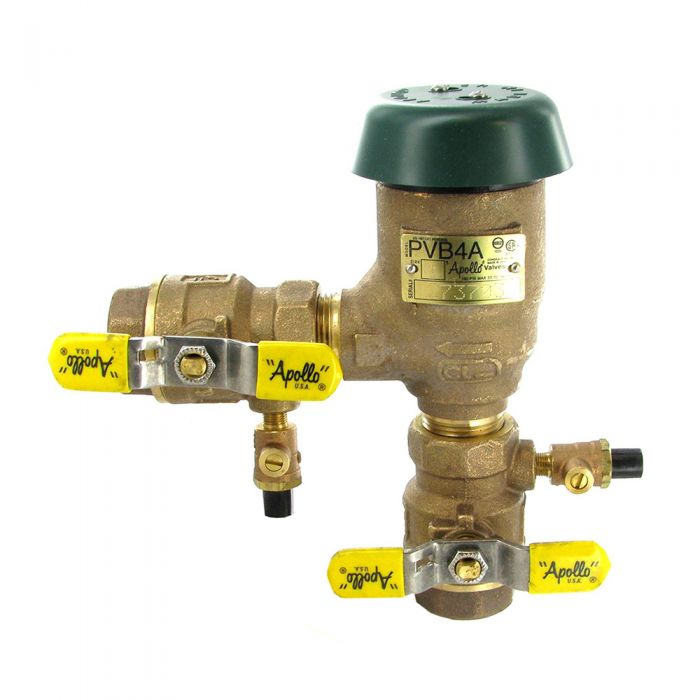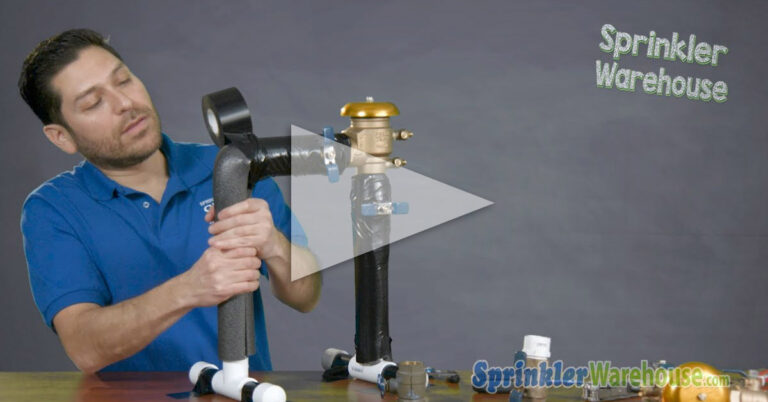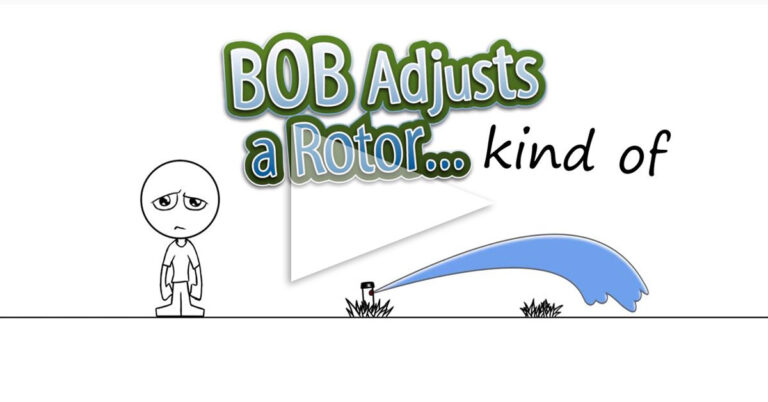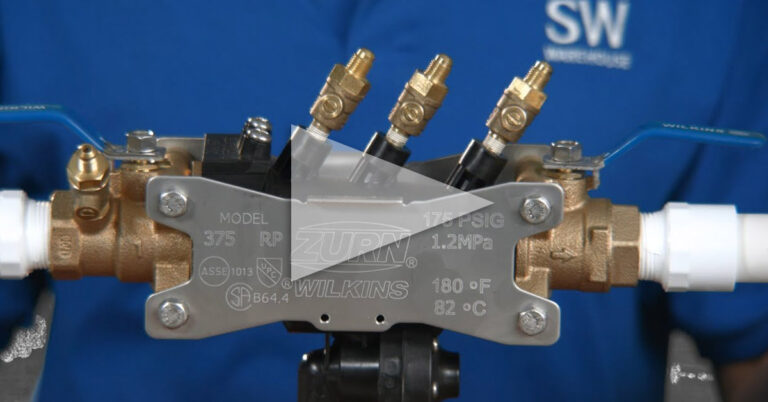Installing A Backflow Device Prevents Water Contamination
A Backflow Preventer Case Study
For a neighborhood in Cedar Hills, Utah the residents got more contamination than they ever thought was possible. Thirteen households were affected last September; their water was making them sick. It turned out the city had recently switched the water supply to these thirteen homes after the former water company went bankrupt. The residents notified the city of the suspicious yellow-looking water. The city discovered an unknown pipe was allowing in secondary water. This pipe, however, was not in the construction plan and was never brought to the city’s attention when the switch was made.
You expect your water company to provide you with clean water. But could you imagine finding out that you did not just have the usual flu that was running around? Nope. It turns out, you’ve been poisoned by the very water you pay for! Backflow is the likely culprit.

The Conbraco 4A-500 Freeze Resistant PVB Backflow Preventer is just one example of a backflow prevention device.
What is Backflow?
Backflow occurs when water in an irrigation system, instead of flowing out, flows upstream. And it carries with it contamination from whatever was around the output source. This doesn’t have to be sewage; it could also be worms, debris, etc.
Backflow devices keep instances like this from happening. When it comes to irrigation, many toxins could be getting into the system. Backflow devices often prevent animal waste, pesticides, and fertilizer from backflowing into drinking water sources. And this is why many municipalities and water districts require backflow prevention devices on irrigation systems.
The two major offenders of backflow are backpressure and back-siphonage.
Backpressure:
Backpressure occurs when a system’s pressure is greater than the city’s water supply pressure. Changes in piping elevation, pumps, or thermal expansion from water heaters, all can create backpressure. Backpressure can be easily avoided by following a few simple steps.
A water heater’s thermal expansion is the most frequent cause of backpressure. Hot water entering a cold section of piping will cause the pipe to expand, creating a small vacuum. If the pressure is even a small amount greater than the city’s supply pressure, you have backpressure.
Backsiphonage:
Below average atmospheric pressure inside of a water system causes back-siphonage. Simply put, backflow happens when the pressure in a city’s water main becomes negative. High water withdrawal rates cause back-siphonage.
For example, a construction crew is working and accidentally rips into the city’s water main. There’s a water hose attached to a hose bib with the other end submerged in toxic water. Due to the negative pressure caused by the broken water main, the hose sucks up the contaminated water and poisons the city’s water.
High-Hazard or Low Hazard:
Backflow devices can prevent both high-hazard and low-hazard issues. Whether the situation is considered a high-hazard or a low-hazard situation may determine the type of backflow device installed.
- High-hazard– A person consuming that fluid could be poisoned. Irrigation is always considered a high hazard because of the chemicals and waste on the ground.
- Low-hazard- Low-hazard would be a liquid that has a strange taste, color, or smell. Low-hazard is drinkable but will not be pleasant to the senses.
Types of Backflow Devices:
Because not all backflow devices can handle both high and low-hazard situations, four different kinds of mechanisms are available. AVBs (atmospheric vacuum breakers), PVBs (pressure vacuum breakers), DCs (double-check valves), and RPS (reduced pressure principle assemblies) are the four main backflow prevention devices.
AVBs vs PVBs
Both Atmospheric Vacuum Breakers and Pressure Vacuum Breakers only prevent backflow due to back-siphonage. AVBs, however, have the capability to bear the pressure only 12 hours out of a 24-hour period and do not have a shutoff valve downstream to them. AVBs are more economically priced than PVBs. PVBs, however, can withstand a much higher pressure at 24 hours a day, 365 days a year, and do allow downstream shutoff of valves.
Both breakers do literally the same thing, but PVBs do not have the limitation of time. If you are wondering why you would even bother putting in an AVB, a great example would be if you were installing a small irrigation system composed of let’s say two zones. This would be a case where it would be much cheaper to use AVBs. However, installing more than five zones might warrant PVBs since you would only need to install one, not five or more AVBs.
DCs vs RPs
The next style of backflow devices to consider is Double Check Valves and Reduced Pressure Principle Assemblies. DCs protect against backpressure or back-siphonage but are designed for low-hazard applications. RP also protects against both backpressure and back-siphonage but is designed for high-hazard applications. Both RPs DCs have two spring-loaded check valves, but RPs have a relief valve between the two check valves. This makes Reduced Pressure Principle Assemblies an upgrade from Double Check Assemblies.
Check with your Authority Having Jurisdiction
When it comes down to it, inquiring from your local AHJ (Authority Having Jurisdiction) about mandates in the area will be the best advice you can get. They will inform you on which type of device to use for any project you might have, as well as where to place it. Always check with the local authorities before installing any type of backflow device.
Common Mistakes
- Don’t forget to put in a backflow preventer when installing your irrigation system.
- Elevation matters; install the backflow preventer at the proper height or it will not function correctly.
- Read the instructions included with your devices.
- Make sure the device is correctly oriented to the water flow in your system. If the device is installed backward, and they sometimes are, it will not protect you from contaminated water.
- Sprinkler Warehouse recommends contacting the local AHJ (Authority Having Jurisdiction) before installation. Your local AHJ will have a recommendation for the placement backflow.
- Make it easily accessible. Since the AHJ needs to inspect your backflow device annually, it is important that the AHJ have easy access. Installing it ten feet off the ground, to compensate for elevation, is not going to work when adjustments or repairs are needed.
- The AHJ will inform you on which type of device to use for any project you might have, as well as where to place it.
- Always check with the local authorities before installing any type of backflow device.
Backflow Device Winterization
If you live in a cold area, backflow device winterization is critical. Plastic pipe is a great alternative for cold weather. This will prevent damage to your backflow device and shouldn’t cause any breakage. If something does break, it will be easier to fix.
Insulated pouches provide a measure of protection for backflow preventers against freezing weather. These thermal covers can be the difference between “business as usual” or a costly repair.
Another alternative would be to add quick releases into a backflow device. Quick releases allow you to unscrew them right there, pull the assembly out, and take it somewhere warm. When blowing out your system, it is incredibly important to put the air compressor hose in after the backflow device. Locking up the springs can cause failure and cross-contamination.
Theft
Copper thieves often target backflow devices and their fittings. Thieves have been busy all over the nation, and go after both residential and commercial systems. When pieces are stolen, it can leave your system open to backflow, exposing people to contamination. Engineering cages are available to prevent anyone from stealing fittings. Don’t become a victim of theft or backflow by securing your device, properly installing the products, and having all your questions answered by your local AHJ.
Final Thoughts
If you are ever unsure of a procedure or installation step, always ask a professional, and re-read the instructions. Our irrigation school is here to help familiarize you with different kinds of backflow devices and teach you how to manage an at-home system.



























